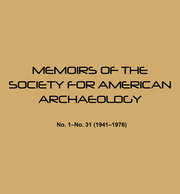Article contents
Extract
The Tyara site, KkFb-7 in the National Museum catalogue and site file, faces the north coast of the Ungava mainland and rests on the west shore of Sugluk Island (Fig. 1). That island stands about five hundred yards from the mainland and from Sugluk Inlet, one of the few good harbors on that coast. This handsome little island, about one and one-half miles long and as wide, consists of rounded, rugged, hardrock hills that shelter well-vegetated, generally flat-floored valleys. The valleys often contain marshy patches. The shore, of variable incline, is quite jagged, a result of abrupt rock outcrops projecting seaward from brief stretches of sandy beach. The shore facing the mainland is, therefore, quite convenient for small boat use. Dark grey gneisses seem to predominate, although they are often cut by dykes and veins of lighter material, notably quartz. The dense, green valley and hillside vegetation includes willows, mosses, grasses, lichens, and a pleasant profusion of arctic wild flowers (Polunin 1948, Pt. III). I was told at Sugluk that at the head of the inlet, willows, growing in protected situations, reach the thickness of a man's wrist.
- Type
- Research Article
- Information
- Copyright
- Copyright © Society for American Archaeology 1968
- 4
- Cited by


